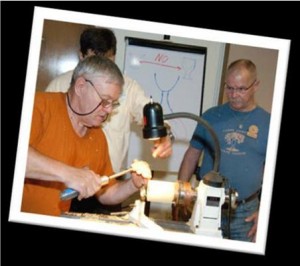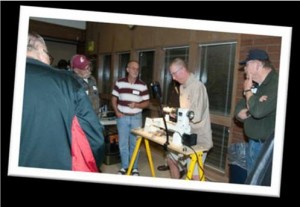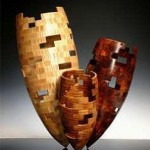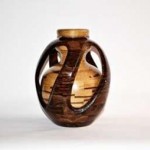
The SPSW also has members that have vision limitations or are legally blind.
The current issue of the American Woodturner, the publication of the American Association of Woodturners has an article about how a professional woodturner dealt with the loss of her sight and continues to turn wood on her lathe.
Madeleine Sabo was already an accomplished artist when she and her husband started turning in 2002. They were selling their work less than a year later. Madeleine has been featured in Country and New Mexico magazines and was President of the Mountaintop Turners chapter of the AAW.
In 2008 Madeleine contracted a MRSA bacteria that resulted in detached retinas and the loss of hearing in her right ear. Her eyesight is now limited to slight black and white vision with some color perception in the periphery of her left eye. This did not stop Madeleine’s desire to turn wood.
With the help of her husband, she has modified her tools and techniques. She only uses three tools – a bowl gouge, skew and parting tool. The skew has been modified to help her line up the tool in the correct position, she has a modified toolrest with stops on each end, and has modified the stand she uses to help her see the edges.
This is a very positive article and shows that determination and desire can help overcome limitations.








